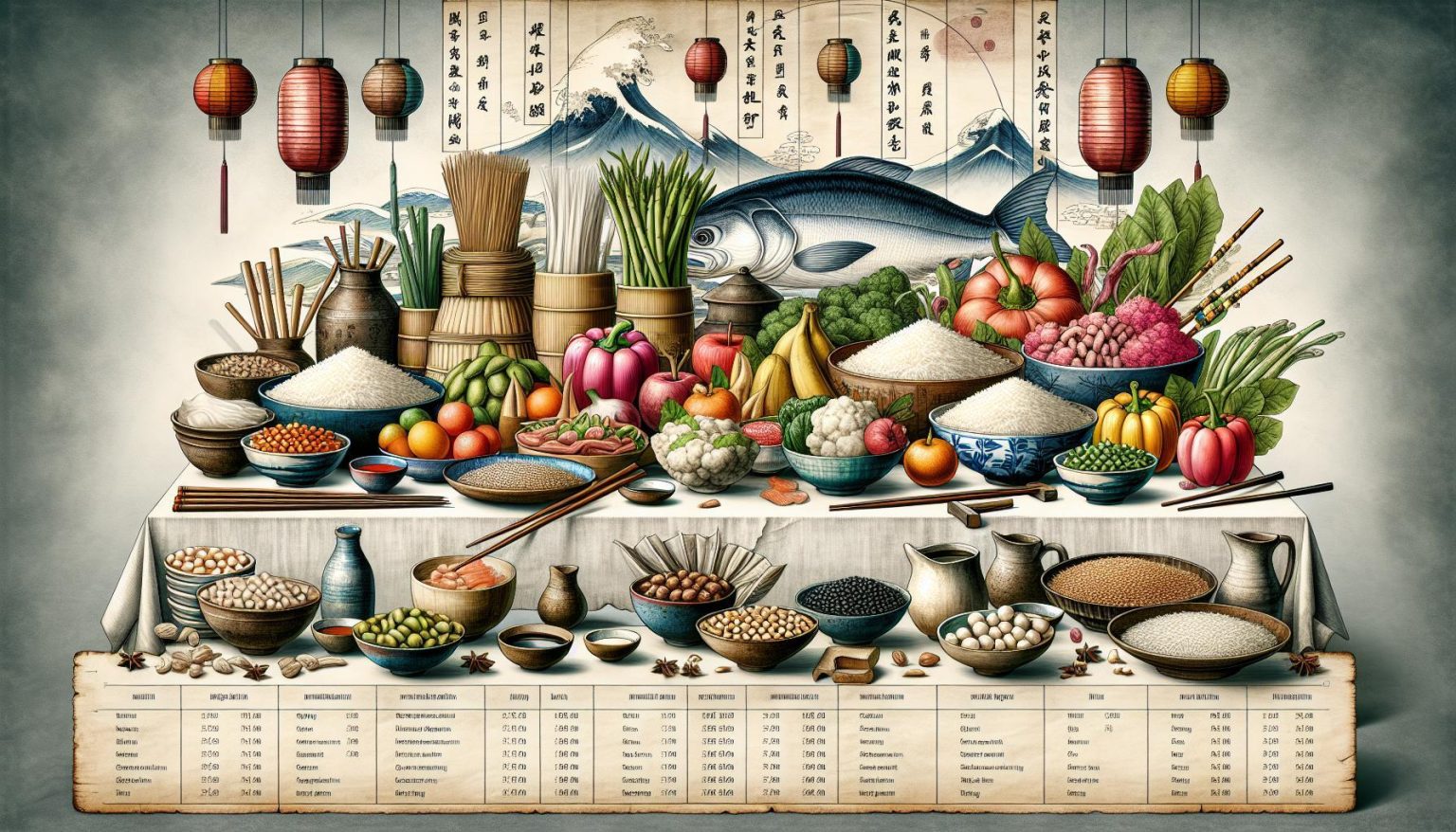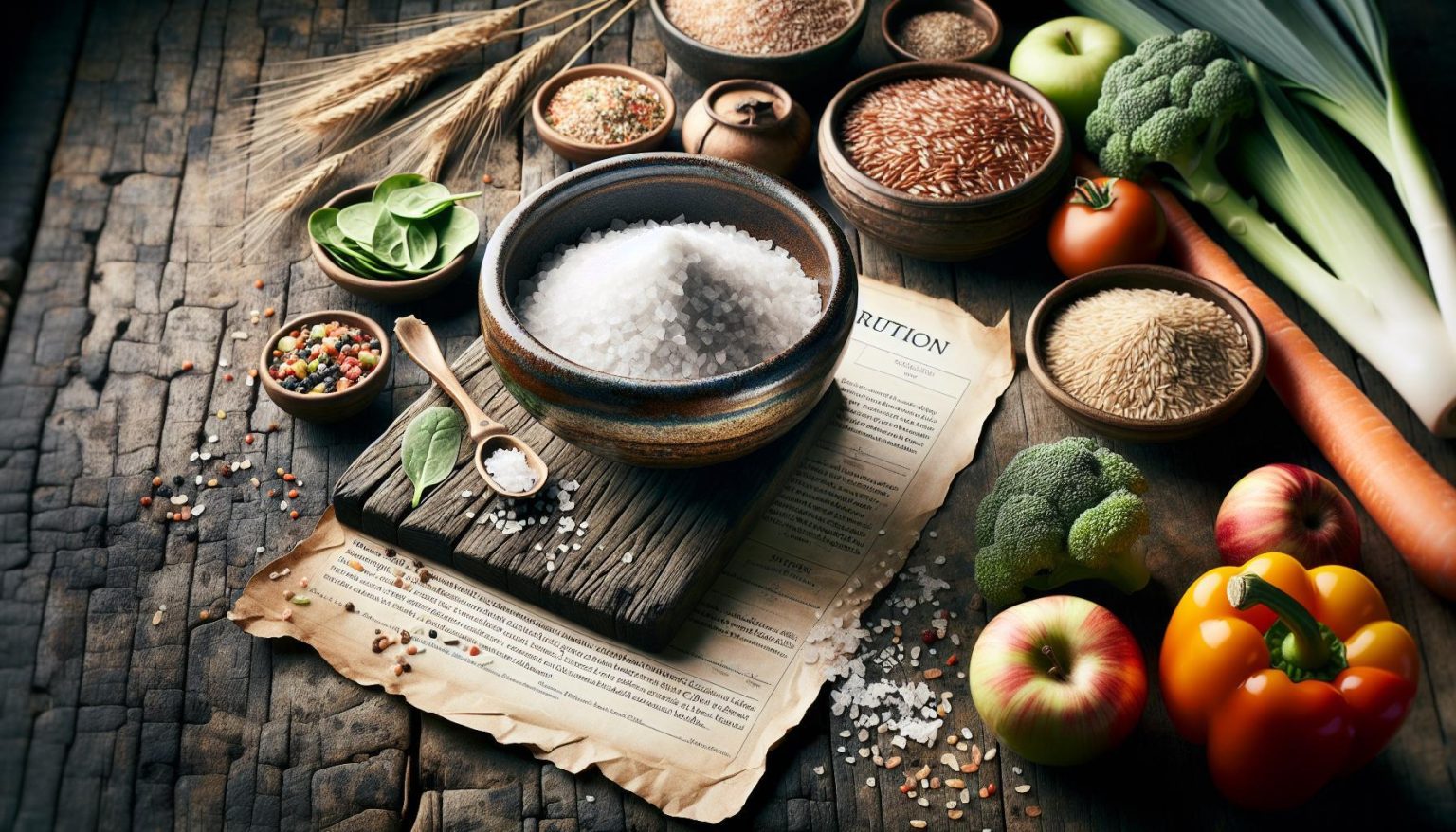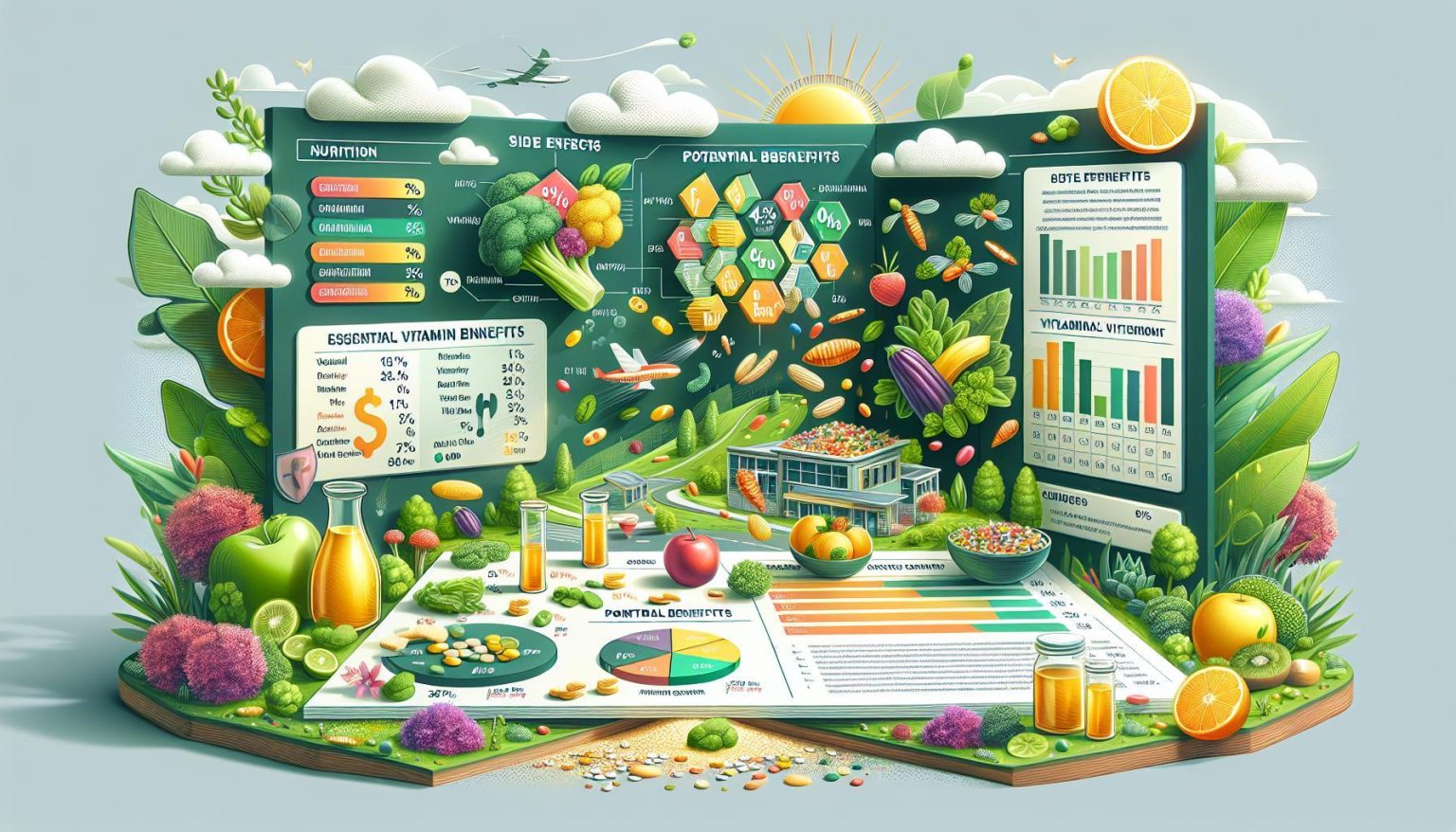When exploring nutritional staples in East Asia, one cannot overlook the prevalance of rice in the regional cuisine. Synonymous with sustenance and life itself, rice plays a crucial role in not just the culinary but also the cultural narrative of East Asia. A rich, ancient history interwines rice cultivation with societal development, revealing an intimate connection between the grain and civilization’s progress. By highlighting the types of rice used in local dishes and their cultural significance, we can uncover how rice contributes to East Asian nutritional needs.
Introduction to the Significance of Rice as a Staple in East Asian Diets
In East Asia, rice is not merely a food item – it is the core of meals, with other dishes often thought of as ‘secondary’, simply serving to complement the rice. This grain has been meeting Nutritional Needs Across Cultures since time immemorial. Its integral role in the diet has shaped eating traditions in indigenous cultures, being incorporated into meals from breakfast to dinner, reflecting its essential nutritional contribution.
A Brief History of Rice Cultivation and Consumption in East Asia
Rice cultivation in East Asia traces back to over 10,000 years ago, making it among the oldest crops grown in human civilization. Its adaption to diverse climates and topography means that it thrives in flooded paddy fields and dry hills alike, reflecting its resilience. The boom in rice cultivation led to a population and economic expansion in ancient East Asia, revealing its central Mediterranean Diet Benefits in societal growth.
The Various Types of Rice Used in East Asian Cooking
East Asian cuisine utilizes a wide variety of rice types, each contributing its unique flavour and texture to various dishes. From the medium-grain Japonica rice prevalent in Japan and Korea to the long-grained Indica prevalent in India and China, these grains each have distinct features that influence the dishes they are used in. Sticky glutinous rice, another popular variant, is used in many sweet and savory dishes, displaying the grain’s versatility.
Popular Rice-Based Dishes in East Asian Cuisine
From China’s fried rice and Japan’s sushi to Korea’s bibimbap, rice forms the base of many East Asian meals. These dishes showcase the variety of ways rice can be manipulated to create unique textures and profiles, closely aligning with the East Asian philosophy of appreciating the simplest elements for their inherent qualities.
The Cultural and Symbolic Importance of Rice in East Asian Societies
Beyond its nutritional benefits, rice holds deep cultural and symbolic significance in East Asia. It is a symbol of life and fertility, often used in religious rituals and ceremonies. Moreover, the value of rice extends from the peasant cultivating it in the fields to the urban household who views it as a comforting staple.
While understanding the cultural and nutritional role of rice in East Asian cuisine is essential, it is equally important to explore other influential components of the diet. In the following section, we will delve into the health benefits of fermented foods in East Asia, a component that has been gaining global recognition due to its probiotic benefits and unique flavor.
Uncovering the Health Benefits of Fermented Foods in East Asia
In the diverse, balanced, and flavorful world of East Asian cuisine, a star player is undoubtedly the array of traditional fermented foods. These are not just loved for their distinct taste and texture, but also for the myriad health benefits they offer.
An overview of traditional fermented foods in East Asia
Fermentation, a process that’s been integral to East Asian food culture, transforms the taste, texture, and nutritional profile of foods. Some commonly consumed fermented foods include kimchi in Korea, miso and natto in Japan, and doujiang, a fermented soybean milk, in China. These foods have been consumed for centuries, bearing witness to the deep-rooted tradition and food preservation methods of East Asia.
The health benefits of consuming fermented foods
Fermented foods are rich in probiotics, which are beneficial bacteria that promote a healthy gut. Regular consumption can help regulate digestion, enhance immunity, and even modulate mood and behavior. Additionally, the fermentation process can increase the bioavailability of nutrients, making fermented foods a wholesome inclusion in the diet.
The science behind the fermentation process and its impact on gut health
During fermentation, bacteria or yeast feed on food’s natural sugars, leading to the production of lactic acid, alcohol, or other compounds. This not only gives the food a flavorful tang but also preserves it naturally. Moreover, fermented foods can improve gut health by promoting a diverse microbiota, providing a protective barrier against pathogenic bacteria, and enhancing the gut’s immune response.
Popular fermented foods in East Asian cuisine, such as kimchi, miso, and soy sauce
Kimchi, a Korean staple made from fermented cabbage and spices, is rich in probiotics and vitamins. Miso, a traditional Japanese seasoning, is made by fermenting soybeans with salt and koji (a fungus). It is an excellent source of protein and fiber. Soy sauce, used widely across East Asia, is made from fermented soybeans and wheat and adds a unique, umami flavor to numerous dishes.
How fermented foods contribute to the unique flavors of East Asian dishes
Through the fermentation process, complex flavors are created that are hard to achieve with just cooking. The process imparts a unique umami flavor to the food, that’s savory and deep. The sourness of kimchi, the depth of miso, and the savory complexity of soy sauce all exemplify the flavor-intensifying magic of fermentation.
In conclusion, the health benefits of fermented foods, coupled with their unique taste, make them an invaluable part of East Asian diets. In transitioning to our next discussion, we will explore another nutritious and versatile food group that plays an essential role in East Asian diets – tofu and soy products. Expect a deep dive into their history, cultural significance, nutritional benefits, as well as their growing popularity in Western diets.
The Essential Role of Tofu and Soy Products in East Asian Diets
When people think of East Asian cuisine, tofu and soy products are often among the first ingredients that come to mind. From the silken tofu dishes of China to the fermented soy-based miso in Japan, soy foods have played a significant and essential role in the diets of East Asians for millennia. From a nutritional standpoint, as well as cultural and historical one, these two mainstays have immense significance.
The History and Cultural Significance of Tofu and Soy Products in East Asia
The cultivation of soybeans dates back thousands of years in East Asia, with early evidence of soy milk and tofu production appearing around the 2nd century BC in China during the Han Dynasty. The soybean’s versatility and integral role in sustaining life during times of scarcity elevated its status in society and led to its widespread adoption throughout Asia. Moreover, soybeans and products derived from soy, like tofu and soy milk, feature prominently in Buddhist vegetarian cuisine, contributing to its relevance in many cultural and religious practices in East Asia.
The Nutritional Benefits of Incorporating Tofu and Soy Products into a Diet
Tofu and soy products are cherished for their nutritional value in addition to their historical and cultural significance. Rich in protein, fiber, and important phytonutrients known as isoflavones, tofu and other soy foods can help reduce the risk of heart disease, certain cancers, and alleviate menopausal symptoms. Furthermore, tofu and soy milk are often fortified with essential vitamins and minerals like calcium, making them a crucial part of a balanced, healthy diet, particularly for people following a plant-based lifestyle.
The Versatile Uses of Tofu and Soy Products in East Asian Cooking
No conversation about tofu and soy products would be complete without acknowledging their incredible versatility in East Asian cooking. From the familiar silken and firm tofu forms often used in stir-fry dishes, soups, and braised dishes, to fermented soy products like tempeh and miso which impart a unique umami flavor to dishes, countless variations span the culinary landscape. Soy sauce and soybean paste, essentials in many Asian kitchens, help deepen and enhance the flavor of numerous traditional and modern dishes.
The Different Types of Tofu and Soy Products Commonly Used in East Asian Cuisine
The gamut of soy-derived foods extends far beyond tofu and soy milk. There’s natto, a fermented soybean dish known for its beneficial probiotic properties, prevalent in Japanese breakfasts. Doubanjiang, a fermented bean paste and a bold flavor powerhouse used extensively in Sichuan cuisine. And don’t forget edamame – the young, green soybeans served steamed as a popular appetizer in many East Asian restaurants.
The Growing Popularity of Tofu and Soy-Based Dishes in Western Cultures
With plant-based diets gaining popularity in western cultures, tofu and soy products have seen a surge in their consumption. Recognized as versatile, flavorful, and nutritionally dense, dishes like mapo tofu, tofu stir-fry, and miso soup have carved out a spot in western mainstream culinary repertoire – further evidence of the integral and global role tofu and soy products play in the world of food.
Now that we’ve delved deep into the importance of tofu and soy products in East Asian cuisine, in our next section, we’ll navigate the rich and diverse world of seafood prominent in East Asian cooking, exploring the wide variety of seafood used in this cuisine region, and their importance from both a cultural and health perspective.
Popular Rice-Based Dishes in East Asian Cuisine
In East Asia, rice is far more than just a side dish – it is a culinary and cultural mainstay that forms the heart of many popular dishes, an undeniable testament to the versatility and importance of this staple grain. This article aims to give you a taste of how rice is skillfully and artistically used in East Asian cooking.
Rice in Chinese Cuisine
In Chinese cuisine, rice makes its way into numerous dishes. Notably, Yangzhou Fried Rice, known for its colorful appearance and rich flavor, combines rice with shrimp, ham, peas, and eggs. It’s a feast for both the eyes and the palate. Another popular rice dish is Congee, a rice porridge that is often eaten for breakfast or served as a restorative dish when one is unwell.
Rice in Japanese Cuisine
Over in Japan, Onigiri is a beloved rice dish. It is a rice ball typically wrapped with nori seaweed and filled with pickled plums, salted salmon, or other delicious ingredients. Another pivotal rice dish is Sushi, globally renowned for its pairing of vinegared rice with raw seafood, vegetables, and sometimes tropical fruits.
Rice in Korean Cuisine
In Korean cuisine, rice finds its expression in the famous dish Bibimbap. It is a mixed rice dish combined with an assortment of vegetables, beef, a raw or fried egg, and a dollop of chili pepper paste for that zesty kick. Kimbap, a Korean variant of sushi rolled together with vegetables, pickles, and various proteins, is another delicious instance of a rice-based dish.
Rice in Vietnamese Cuisine
In Vietnam, rice takes the form of a thin, delicate pancake in Banh Xeo. This sizzling pancake filled with pork, shrimp, and bean sprouts, folded into a crisp, edible vessel makes for a tasty treat. Another rice-based Vietnamese dishes worth mention is Phở, a soup made of broth, rice noodles, and meat, typically beef or chicken.
Integral to every East Asian menu, these rice-based dishes provide not just sustenance but also comfort, connection, and an expression of the rich culinary heritage of their respective countries.
Through this exploration of the role of rice in East Asian cuisine, we gain deeper insight into the unique food culture of East Asia. However, rice is not the only centerpiece in their diets; vegetables are another key player. We explore this further in the next section, focusing on the diversity of vegetables in East Asian cuisine.
Conclusion
In conclusion, the nutritional staples of East Asian cuisine, including rice, fermented foods, tofu and soy products, seafood, and vegetables, are essential components of a well-rounded and healthy diet. These staple foods not only provide a rich cultural and historical context but also offer a wide array of health benefits, contributing to the overall well-being of individuals who consume them. It is important to continue exploring and appreciating the diverse array of ingredients present in East Asian cuisine and to adopt sustainable practices in their consumption.
Frequently Asked Questions
1. What are the most popular rice-based dishes in East Asian cuisine?
Popular rice-based dishes in East Asian cuisine include Japan’s sushi, Korea’s bibimbap, China’s fried rice and congee, and Japan’s onigiri. These dishes highlight rice combined with various ingredients like seafood, vegetables, and meats, each offering a unique taste and cultural significance.
2. How do fermented foods contribute to gut health?
Fermented foods benefit gut health by providing probiotics that balance the gut microbiome, improving digestion, enhancing immune function, reducing inflammation, and positively influencing mental health. They contribute to a healthy digestive system and overall well-being.
3. What are the different types of tofu and soy products commonly used in East Asian cuisine?
East Asian cuisine features various tofu and soy products, including silken tofu, firm tofu, fermented tofu, yuba (tofu skin), tempeh, miso, and soy milk. These products are used in diverse ways, from soups and stir-fries to desserts and beverages, adding versatility to the cuisine.
4. What are the various cooking methods and dishes featuring seafood in East Asian cuisine?
Seafood in East Asian cuisine is prepared through steaming, grilling, frying, simmering, and fermenting. Notable dishes include steamed fish with ginger (China), teriyaki salmon (Japan), sashimi (Japan), tempura shrimp (Japan), Korean spicy seafood stew (Maeuntang), and kimchi with oysters (Korea).
5. What are some innovative ways of using East Asian vegetables in modern cooking?
Innovative uses of East Asian vegetables in modern cooking include stir-fried bok choy with fusion spices, kimchi tacos, pickled daikon in sandwiches, seaweed salads, miso-glazed eggplant, and Buddha bowls featuring edamame, pickled radish, and seaweed. These creative approaches bring traditional ingredients into contemporary culinary practices.










